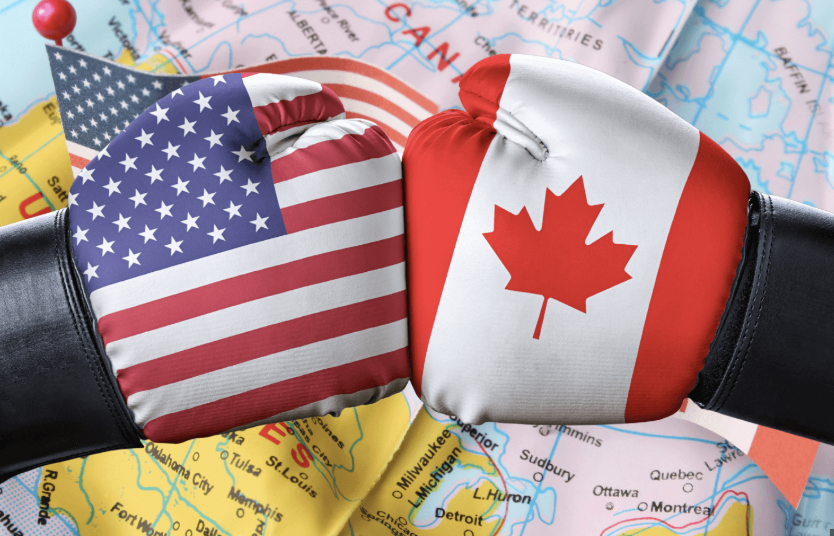The recent back-and-forth tariffs between the U.S. and Canada are more than just political maneuvering; they directly affect businesses, consumers, and the broader economy on both sides of the border. The ongoing trade war can drive up prices on everyday goods, disrupt supply chains, and affect jobs in key industries like agriculture, manufacturing, and retail. As two of the world’s largest trading partners, what happens between these countries can affect the entire global market. With both countries strongly intertwined in each other’s economies, the impact of these tariffs is significant.
U.S. Treasury Secretary, Janet Yellen, has expressed many concerns about the impact of broad tariffs on the U.S. economy. In December 2024, at a Wall Street Journal CEO Council event, she stated that such tariffs could “raise prices significantly for American consumers and create cost pressures” on companies, potentially derailing progress on inflation and adversely affecting economic growth.
On Feb. 1, President Donald Trump announced a 25 percent tariff on Canadian imports, which was in effect as of Feb.4. According to the Office of the U.S. Trade Representative, the tariff will target Canadian-made aluminum, dairy products, and manufactured goods in what officials describe as a move to “strengthen American border industries and address persistent trade imbalances.” This bold action frustrated Canadian officials and business owners, who depend on smooth, tariff-free trade with the U.S.
In retaliation, Canada responded quickly on March 4 with CAD 155 billion in tariffs on American products. As stated in an official press release from the Prime Minister, he imposed a 25 percent tariff on CAD 30 billion worth of U.S. goods. Canadian officials have warned that this retaliation could escalate, with the tariff potentially increasing to $85 billion if the situation worsens. Prime Minister Justin Trudeau responds strongly to the tariffs, saying that Canada will not be bullied into submission and will stand firm to ensure that these actions do not unfairly burden Canadian businesses and consumers. He called on Canadians to support local industries by buying Canadian-made products and noted that the government would explore further measures if necessary.
Trump defended his decision by saying these secure tariffs protect American jobs at our borders. He believes America requires fair trade, and we won’t back down until Canada recognizes the need to level the playing field.
As tensions rise between the U.S. and Canada, each may continue to escalate tariffs on each other’s goods, with both governments looking to grow their economic power to force a change in trade policies. If these tariffs continue, American and Canadian consumers could face higher prices on everyday goods such as clothing, electronics, food, and luxury items, which we are starting to see. According to the Consumer Price Index (CPI) released by the U.S. Bureau of Labor Statistics, the costs of imported goods coming from Canada have increased by an average of 3.5 percent since these tariffs were put into place.
Businesses, especially those in the agriculture and technology industries, may also be forced to adjust their policies and plans, potentially leading to job cuts or delays in product availability. For instance, car makers in the U.S., who depend on Canadian steel for production, can face higher prices, possibly leading to pauses or changes in production and distribution. The retail industry is facing the consequences too, with specific electronics becoming more pricey for consumers because of the higher cost of importing from Canada.
These tariffs disadvantage businesses in both places, which can affect operations that rely on timely and affordable trade between the borders. For example, Korel Dawkins, a Canadian chemical engineer in the Samsung tech industry, shared that the extra costs from U.S. tariffs have led to prices skyrocketing for microchips, placing them at a disadvantage against retailers domestically.
With the economic possibilities growing, analysts are concerned that these tariff disputes could negatively impact the broader global economy. According to the World Trade Organization (WTO), global trade growth is projected to decrease in 2025 if major trade disputes continue. North America is one of the most directly affected regions.
As the world watches the U.S. and Canada navigate this situation, the uncertainty surrounding these tariffs continues to spark debates over trade policy, the future of border relations, and the broader impact on the global economy.
As we move further into 2025, the situation remains open. Both countries are expected to engage in more negotiations to avoid a complete pause in trade relations. However, for now, businesses and consumers must prepare for the effects of this continuing trade war.









